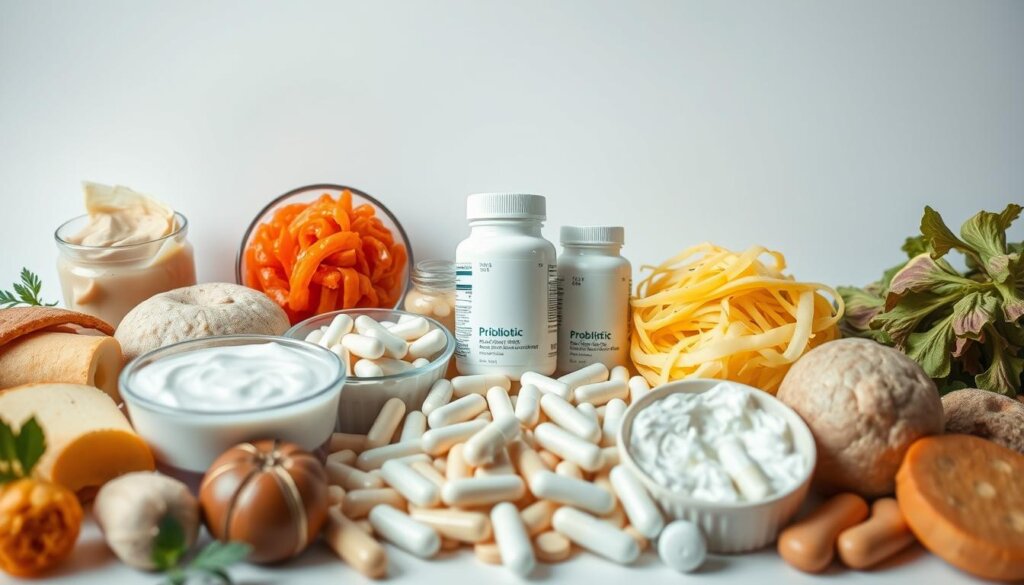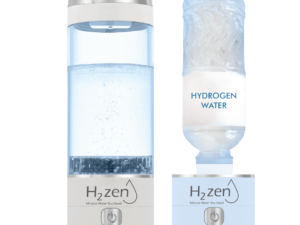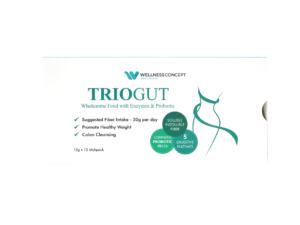What if the key to unlocking better digestion, immunity, and energy isn’t just taking probiotics—but taking the right amount for your body? With shelves overflowing with options boasting 1 billion to 100 billion CFUs, finding your ideal intake can feel overwhelming. This guide cuts through the confusion.
Probiotic supplements aren’t one-size-fits-all. Your age, diet, and health goals all play a role. For example, someone managing occasional bloating might thrive on 5 billion CFUs, while others tackling specific gut issues could benefit from higher doses. The trick lies in balancing science with personal needs.
We’ll simplify how colony-forming units (CFUs) work and why they matter. You’ll learn to match strains like Lactobacillus or Bifidobacterium to your unique situation. Plus, discover how factors like daily probiotic use interact with your body over time.
Key Takeaways
- CFU counts range from 1 billion to 100 billion, depending on health goals
- Gut needs vary based on lifestyle, age, and existing conditions
- Consistency matters more than extreme short-term doses
- Professional guidance helps tailor strategies effectively
- Food sources like yogurt complement supplements
Ready to transform guesswork into a clear plan? Let’s explore how to build a routine that supports long-term wellness without wasting time or money.
Understanding Probiotics and Their Benefits
Your gut is home to trillions of tiny workers that keep your body running smoothly. These live helpers—called probiotics—include bacteria and yeasts that team up with your digestive system. To qualify as probiotics, they must survive digestion, offer proven benefits, and arrive in sufficient numbers to make a difference.
What Are Probiotics?
Think of probiotics as your body’s friendly neighborhood microorganisms. Strains like Lactobacillus (found in yogurt) and Bifidobacterium (common in supplements) help break down food and crowd out harmful germs. Even the yeast Saccharomyces boulardii joins this microscopic workforce.
The Role of Probiotics in Gut Health
Your gut houses over 300 types of bacteria working like a well-oiled machine. They produce vitamins, train your immune system, and maintain an 85:15 balance between helpful and harmful microbes. When this ratio tips—due to stress or antibiotics—issues like bloating or fatigue can arise.
By supporting this delicate balance, probiotics do more than aid digestion. Studies suggest they influence mood and immune responses too. Whether through supplements or fermented foods, these tiny allies play a big role in overall health.
The Science Behind Probiotic Dosage
Colony Forming Units (CFUs) act as your probiotic’s quality control team. These units count only live, active bacteria capable of multiplying in your gut. Think of them as your microscopic reinforcements – each one ready to work.

Understanding Colony Forming Units (CFUs)
A label stating “10 billion CFUs” means 10 billion viable bacteria survived manufacturing. But here’s the catch: some products list CFUs at production, not expiration. Look for guarantees like “through best-by date” for real-world effectiveness.
Higher numbers aren’t automatically better. Research shows 500 million CFUs of Saccharomyces boulardii can support travelers, while certain Lactobacillus strains need 10-20 billion to impact digestion. It’s like choosing between a precision scalpel and a sledgehammer – both work, but for different jobs.
How Dosage Affects Digestive Balance
Your gut’s 85:15 ratio of good-to-bad bacteria thrives on equilibrium. Too few CFUs might not tip the scales, while excessive amounts could temporarily overwhelm sensitive systems. Studies suggest starting with 1-5 billion CFUs allows gradual adjustment.
One trial found 50 billion CFUs improved IBS symptoms in 70% of participants. Another showed 100 million CFUs of Bifidobacterium boosted immunity in seniors. The key? Match the dosage to your body’s current needs – like adjusting vitamins based on diet gaps.
Calculating the Recommended Dose of Probiotics for Your Needs
Finding the right probiotic amount isn’t about guessing—it’s about matching your body’s unique needs. Age, health status, and goals all shape how many CFUs work best. Let’s break down what matters most.
Factors Influencing the Ideal Dosage
Adults aiming for general wellness often thrive with 10-20 billion CFUs per day. Children aged 4-17 typically need half that amount—5-10 billion—since their smaller bodies absorb nutrients differently. For toddlers (1-3 years), 2-4 billion CFUs daily is common, while infants require just 1-2 billion.
Specific conditions demand tailored approaches. Those recovering from antibiotics might temporarily use up to 100 billion CFUs to rebuild gut balance. IBS management often requires 20-350 billion CFUs, depending on symptom severity. Always consult a pediatrician before giving probiotics to children.
Interpreting CFU Counts on Labels
Labels list CFUs as “colony-forming units,” but check two details: expiration dates and strain diversity. A product claiming “50 billion CFUs at manufacture” might deliver far less by the time you use it. Look for phrases like “through best-by date” for accuracy.
For example, a supplement targeting digestion may combine Lactobacillus and Bifidobacterium strains. Compare this to products designed for immune support, which often feature different bacteria blends. Daily digestive health needs differ from short-term therapeutic use—choose CFUs that align with your goals.
Probiotic Sources: Supplements and Fermented Foods
Choosing between supplements and fermented foods depends on your health priorities. Both deliver beneficial bacteria but differ in consistency and nutritional value. Let’s explore how each option supports gut health.

Supplements vs. Traditional Fermented Foods
Fermented foods like kimchi, sauerkraut, and yogurt offer diverse bacterial strains plus vitamins and enzymes. A study found people consuming these foods daily had 40% fewer digestive issues. However, pasteurization destroys live cultures—always check for “contains active cultures” labels.
| Feature | Fermented Foods | Supplements |
|---|---|---|
| Strain Diversity | 10-30+ strains | 1-15 strains |
| Nutrient Content | High (fiber, vitamins) | Low |
| Dosing Precision | Variable | Exact CFU counts |
Selecting Effective Probiotic Products
Quality supplements list strain names like Lactobacillus rhamnosus GG and guarantee CFUs until expiration. Refrigeration is essential for certain products. For foods, unpasteurized kombucha and kefir often contain 5x more live cultures than processed versions.
Pairing both sources works best. Add miso soup to meals while using supplements for targeted support—especially if experiencing signs of bacterial imbalance. This dual approach ensures consistent intake while maximizing benefits.
Personalizing Probiotic Intake
Your gut’s needs are as individual as your fingerprint—probiotics should match that. While general guidelines provide a starting point, fine-tuning requires attention to your body’s signals and expert input.
Consulting Healthcare Professionals
Doctors analyze your medical history like detectives solving a case. For people managing chronic conditions or recovering from illness, they might recommend specific strains. A Lactobacillus-only formula could help antibiotic recovery, while multispecies blends often support general wellness.
| Situation | Professional Input | Expected Outcome |
|---|---|---|
| General Wellness | 5-20 billion CFU blend | Daily digestive support |
| Existing Conditions | Targeted strain selection | Symptom reduction |
| Post-Antibiotic Recovery | High-CFU temporary regimen | Gut balance restoration |
Monitoring Your Digestive Response
Track changes like a scientist. Note improvements in bloating or regularity within 2-4 weeks. Some people experience temporary gas when taking probiotics—this often means your body is adjusting.
Keep a daily log with three columns: Time, Symptoms, and Diet Changes. Patterns emerge faster when you record details like “30 minutes after breakfast” or “with dairy products.” Share this diary with your doctor to refine your approach.
Benefits build gradually. If no changes appear after six weeks, a professional might adjust strains or CFUs. Remember—consistency matters more than rushing results. Your gut didn’t become unbalanced overnight, and healing takes time.
Integrating Probiotics into a Healthy Lifestyle
Building a thriving gut ecosystem requires more than just popping a supplement—it’s about creating habits that let good bacteria flourish. Timing, teamwork with nutrients, and gradual adjustments make all the difference.
Power Duo: Probiotics Meet Prebiotics
Think of prebiotics as fertilizer for your gut’s good bacteria. Foods like bananas, oats, and garlic contain fibers that feed probiotics. A 2023 study showed people combining both saw 50% faster improvements in digestion compared to probiotics alone.
Daily Habits for Lasting Results
- Take capsules 30 minutes before breakfast—stomach acid levels are lowest then
- Store refrigerated brands properly to preserve live cultures
- If using antibiotics, space doses 2-3 hours apart from probiotics
Consistency beats intensity. Taking 10 billion CFUs daily for 8 weeks works better than 50 billion CFUs sporadically. Your gut thrives on routine.
When to Shift Your Strategy
After 4-6 weeks, assess changes in energy or digestion. Some thrive on steady intake, while others benefit from seasonal adjustments:
| Timeline | Action |
|---|---|
| 0-2 weeks | Start low (5-10 billion CFUs) |
| 3-6 weeks | Maintain consistent routine |
| 7+ weeks | Adjust based on symptom tracking |
Remember—healthy gut ecosystems develop gradually. Pair smart supplementation with fiber-rich meals, and let time work its magic.
Get in Touch with Wellness Group
Navigating probiotic choices becomes simpler with expert guidance. Wellness Group stands ready to help individuals craft tailored strategies for gut health and overall wellness. Their team combines scientific knowledge with practical insights to address unique needs.
Contact Details and WhatsApp Support
For quick answers about supplement options or gut microbiome queries, message Wellness Group at +60123822655 via WhatsApp. They respond to dosage questions, product comparisons, and lifestyle adjustments during business hours. This direct line eliminates guesswork—get clarity without waiting days for email replies.
Business Hours for Inquiries
Plan consultations using their health-focused schedule:
- Weekdays: 9:30 AM – 6:30 PM
- Saturday: 10 AM – 5 PM
- Sunday: Closed
Wellness Group analyzes factors like diet, stress levels, and existing conditions to recommend effective probiotic regimens. Whether starting a supplement routine or refining current practices, their advisors provide actionable steps. Clients receive support for monitoring progress and adjusting CFU counts as needed.
Reach out today to align your probiotic use with personalized health goals. The team’s friendly approach transforms complex science into manageable daily habits.
Conclusion
Unlocking your body’s full potential starts with nurturing the invisible ecosystem within. The right probiotic strategy balances science with personal needs—whether you thrive on 5 billion CFUs or require 100 billion for specific conditions. Success lies in understanding strain differences, CFU measurements, and how fermented foods complement supplements.
Consistency beats extremes. Daily intake of 1-50 billion CFUs often yields better long-term results than sporadic megadoses. Track energy levels and digestion changes over weeks, adjusting with professional guidance. Remember—CFU potency matters most when strains survive to reach your gut.
Probiotics work best alongside fiber-rich meals and lifestyle tweaks. Pair kimchi with salads, or add yogurt to smoothies while maintaining your supplement routine. Like tending a garden, a healthy gut microbiome thrives on steady care rather than quick fixes.
Your journey to balanced wellness isn’t about perfection—it’s about progress. Start small, stay consistent, and let those microscopic allies build resilience day by day.
FAQ
How do probiotics improve digestive health?
Probiotics help maintain a balanced gut microbiome by introducing beneficial bacteria. These microorganisms support digestion, nutrient absorption, and immune function. Regular intake can reduce issues like bloating or irregular bowel movements.
What should someone look for when choosing a probiotic supplement?
Check the CFU count, which indicates live microorganisms per serving. Look for products with 10–50 billion CFUs for daily use and trusted brands like Culturelle or Renew Life. Strains such as Lactobacillus or Bifidobacterium are well-researched for gut health.
Can fermented foods replace probiotic supplements?
Foods like kimchi, kefir, or Activia yogurt provide natural sources of live cultures. However, their CFU counts vary, and heat or processing can reduce potency. Supplements offer standardized doses, making them better for targeted support.
How long does it take to notice changes after starting probiotics?
Some people experience improvements in energy or digestion within days. For chronic issues, it may take 4–6 weeks. Consistency is key—pairing them with prebiotic fiber and tracking symptoms helps gauge progress.
Are there risks to taking too many CFUs?
High doses (over 100 billion CFUs) might cause temporary gas or discomfort. Starting with smaller amounts, like 5–10 billion CFUs, allows the body to adjust. Always consult a doctor before exceeding standard dosages.
Should children take probiotics?
Certain strains, such as Lactobacillus rhamnosus GG, are safe for kids and may ease colic or diarrhea. Opt for pediatric-friendly options like Florastor Kids and follow age-specific guidelines from healthcare providers.
How can Wellness Group assist with probiotic selection?
Wellness Group offers personalized advice via WhatsApp at +60123822655. Their team is available weekdays from 9 AM to 6 PM to discuss product options, dosage adjustments, and digestive health strategies.






